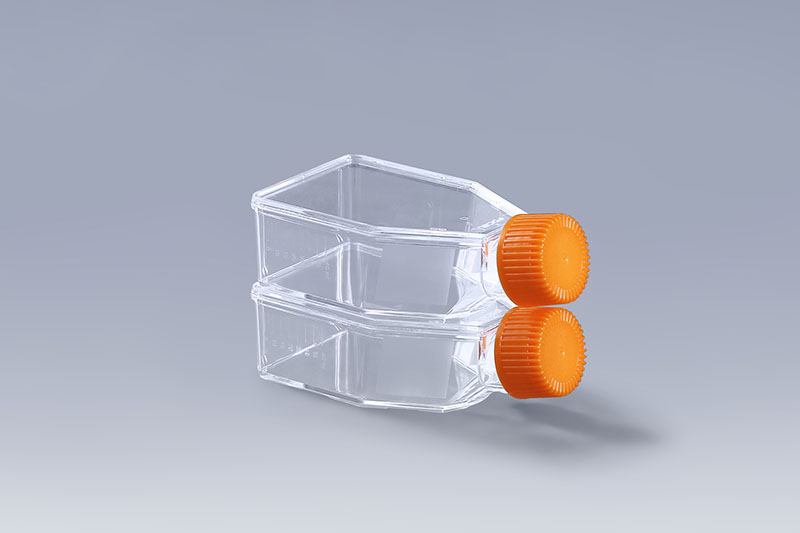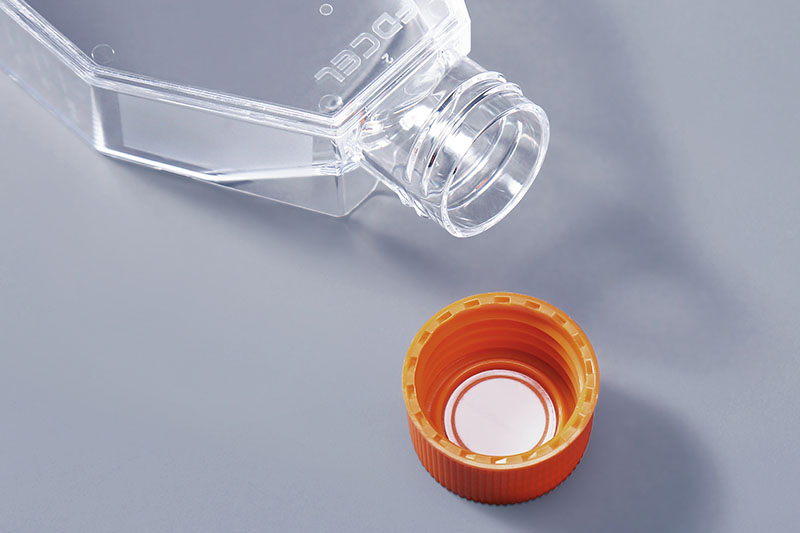After the cells grow to a certain extent, they need to be digested with digestive enzymes for the next step of culture. While digesting cells is a routine procedure, inattention can also affect later cell growth. So, how do we digest the cells in the cell culture flask?
First of all, digesting the cells in the cell culture flask requires the help of digestive enzymes. The commonly used ones include trypsin and collagenase. The specific selection depends on the type of cells and the test conditions. The specific operation process of digesting cells is as follows:
1. Aspirate the culture medium and wash the cells once with sterile PBS, Hanks' solution or serum-free medium to remove residual serum.
FuDau T25 Cell Culture Flasks
2. Add a small amount of trypsin cell digestion solution to cover the cells slightly. According to the difference in trypsin efficiency, the amount of trypsin can be increased or decreased. Place at room temperature for 30 seconds to 2 minutes (different cell digestion times vary)
3. Observed under the microscope, the cells shrank obviously, and the bottom of the culture vessel was observed with the naked eye and found that the morphology of the cells changed significantly and appeared white;
FuDau T75 Cell Culture Flasks
4. Aspirate the trypsin cell digestion solution at this time. Add serum-containing complete cell culture medium and blow down the cells, which can be used directly for subsequent experiments. If the digestion is found to be insufficient, trypsin cell digestion solution is added for re-digestion.
Control the time when digesting the cells in the cell culture flask. Excessive digestion will easily cause a large number of cells to fall off the wall of the flask, or even cause cell breakage.
The FAI climbed 5.9 percent year-on-year in the first 11 months of 2018, quickening from the 5.7-percent growth in Jan-Oct, the National Bureau of Statistics (NBS) said Friday in an online statement.
The key indicator of investment, dubbed a major growth driver, hit the bottom in August and has since started to rebound steadily.
In the face of emerging economic challenges home and abroad, China has stepped up efforts to stabilize investment, in particular rolling out measures to motivate private investors and channel funds into infrastructure.
Friday's data showed private investment, accounting for more than 60 percent of the total FAI, expanded by a brisk 8.7 percent.
NBS spokesperson Mao Shengyong said funds into weak economic links registered rapid increases as investment in environmental protection and agriculture jumped 42 percent and 12.5 percent respectively, much faster than the average.
In breakdown, investment in high-tech and equipment manufacturing remained vigorous with 16.1-percent and 11.6-percent increases respectively in the first 11 months. Infrastructure investment gained 3.7 percent, staying flat. Investment in property development rose 9.7 percent, also unchanged.
 English
English




















































